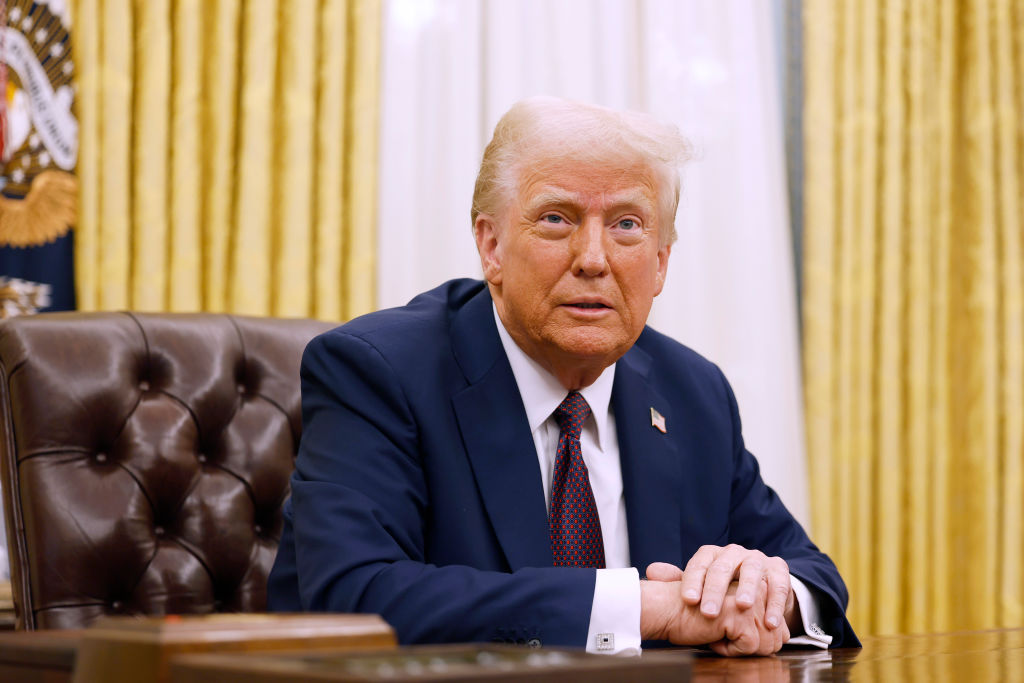The Weak Dollar: When Is Enough Enough?
The buck has fallen significantly over the past two years, but the decline has failed to make much of an impact on the nation’s trade and current account deficits.
Look for more short-term gyrations in currency markets, but don’t be surprised if the U.S. dollar ends up in late summer about where it is now.
But all bets are off if Greece and other euro zone countries default on their debts, if the recovery in the U.S. falters, or if Congress can’t reach agreement on raising the debt ceiling and the U.S. then defaults.
When a nation’s deficits become as large as they are in the U.S., two things are supposed to happen. Its currency is expected to slide, making imports more expensive and its exports more competitive. And its deficits are expected to shrink — and eventually even disappear.

Sign up for Kiplinger’s Free E-Newsletters
Profit and prosper with the best of expert advice on investing, taxes, retirement, personal finance and more - straight to your e-mail.
Profit and prosper with the best of expert advice - straight to your e-mail.
Generally, the dollar has been on a down slope for decades, and the recession pushed it down a bit faster. Larry Greenberg, a former senior Federal Reserve currency analyst with long experience on Wall Street, calculates that the dollar has fallen about 10% over the past two years, measured against a basket of big currencies. But since its latest peak a year ago, it has dipped 13.6%.
The reasons are easy to identify: The recession, better rates of return in Europe, Japanese government intervention to keep the yen competitive during the slump and the Federal Reserve’s actions to keep interest rates low to help spur the U.S. economy.
But there have been some notable interruptions in the dollar’s decline. The worsening of the European debt crisis last year — with the prospect that Greece might be unable to pay its debts, and that Spain, Portugal and Ireland might follow — sent investors rushing to the dollar, which played its traditional role as a safe haven. Each new mini-crisis has pushed the dollar up.
Even if the European debt problem hadn’t bolstered the dollar’s value, the currency's decline probably would have been modest. No matter how much stronger the euro or yen is, no other country’s foreign exchange market is as deep and broad as America’s, or nearly as liquid. The dollar also is the world’s biggest reserve currency, so its fluctuations are more restrained.
There’s widespread agreement that the dollar must fall significantly more if the administration is to achieve its export goal. But even if the dollar continues to dip, it is unlikely to have much impact. Exports are only a small share of the U.S. economy. There’s been no real kick yet. (See "Can the U.S. Trade Its Way out of a Slump?) And the rest of the economic recovery seems to have begun to sputter.
Both the Obama administration and the Fed have been handcuffed in seeking a weaker dollar. For years, top officials have felt obliged to support a so-called strong dollar policy, lest they spark panic in the foreign exchange markets and cause a run on the dollar that would send its value plummeting to dangerous levels. Still, both the White House and the Fed have hinted they’d like to see the dollar decline a bit further, both to create more jobs at home and to discourage American firms from moving production abroad. And they’ve taken no steps to try to arrest the decline.
For the moment, betting on the dollar’s continued decline seems a safe enough wager. Pushing interest rates up at home could help bolster the dollar’s value. But the Fed is ending its program of buying up Treasury bonds to help keep interest rates low. And it’s unlikely to want to boost rates sharply, for fear of blunting the increasingly fragile recovery.
After a summer of fluctuations that results in little overall change, the dollar is likely to resume its gradual fall later in the year. That shouldn’t be reason for concern. As noted by Edwin Truman, a former senior economist at the Fed who is now at the Peterson Institute for Economics in Washington, the dollar’s dips have not unsettled other financial markets.
That should continue to be the case unless a debt ceiling agreement falls through. For now, a U.S. default seems unlikely. But in this political climate, it can’t be ruled out.
Get Kiplinger Today newsletter — free
Profit and prosper with the best of Kiplinger's advice on investing, taxes, retirement, personal finance and much more. Delivered daily. Enter your email in the box and click Sign Me Up.

-
 AI Heads to Washington
AI Heads to WashingtonThe Kiplinger Letter There’s big opportunity for AI tools that analyze MRIs and other medical images. But also big challenges that clinicians and companies will have to overcome.
By John Miley
-
 Ask the Editor: Questions on Amended Returns and Property
Ask the Editor: Questions on Amended Returns and PropertyAsk the Editor: Taxes, April 18, 2025 — Joy Taylor, The Kiplinger Tax Letter Editor, answers questions on amended returns, property and deductions.
By Joy Taylor
-
 AI Heads to Washington
AI Heads to WashingtonThe Kiplinger Letter There’s big opportunity for AI tools that analyze MRIs and other medical images. But also big challenges that clinicians and companies will have to overcome.
By John Miley
-
 The AI Doctor Coming to Read Your Test Results
The AI Doctor Coming to Read Your Test ResultsThe Kiplinger Letter There’s big opportunity for AI tools that analyze CAT scans, MRIs and other medical images. But there are also big challenges that human clinicians and tech companies will have to overcome.
By John Miley
-
 The New Space Age Takes Off
The New Space Age Takes OffThe Kiplinger Letter From fast broadband to SOS texting, space has never been more embedded in peoples’ lives. The future is even more exciting for rockets, satellites and emerging space tech.
By John Miley
-
 Rising AI Demand Stokes Undersea Investments
Rising AI Demand Stokes Undersea InvestmentsThe Kiplinger Letter As demand soars for AI, there’s a need to transport huge amounts of data across oceans. Tech giants have big plans for new submarine cables, including the longest ever.
By John Miley
-
 What DOGE is Doing Now
What DOGE is Doing NowThe Kiplinger Letter As Musk's DOGE pursues its ambitious agenda, uncertainty and legal challenges are mounting — causing frustration for Trump.
By Matthew Housiaux
-
 A Move Away From Free Trade
A Move Away From Free TradeThe Letter President Trump says long-term gain will be worth short-term pain, but the pain could be significant this year.
By David Payne
-
 Trump’s Whirlwind Month of Crypto Moves
Trump’s Whirlwind Month of Crypto MovesThe Kiplinger Letter The Trump administration wants to strengthen U.S. leadership in the cryptocurrency industry by providing regulatory clarity.
By Rodrigo Sermeño
-
 Donald Trump Tests His Limits
Donald Trump Tests His LimitsThe Kiplinger Letter President Encounters Legal Obstacles in Pursuit of Ambitious Agenda.
By Matthew Housiaux